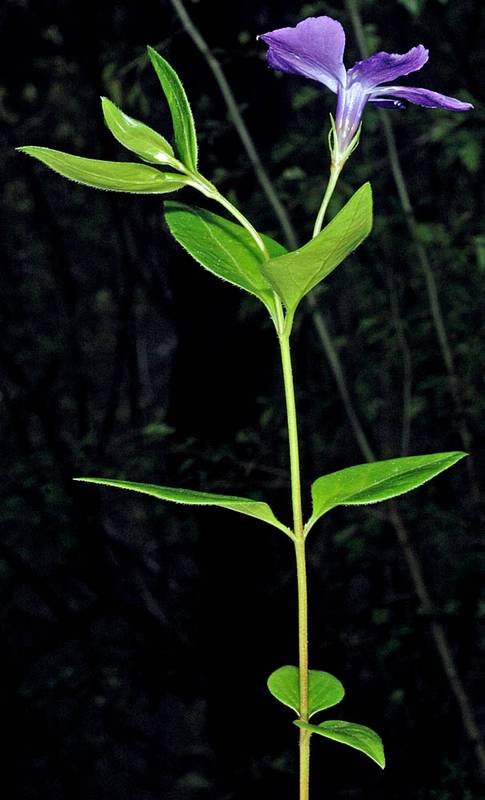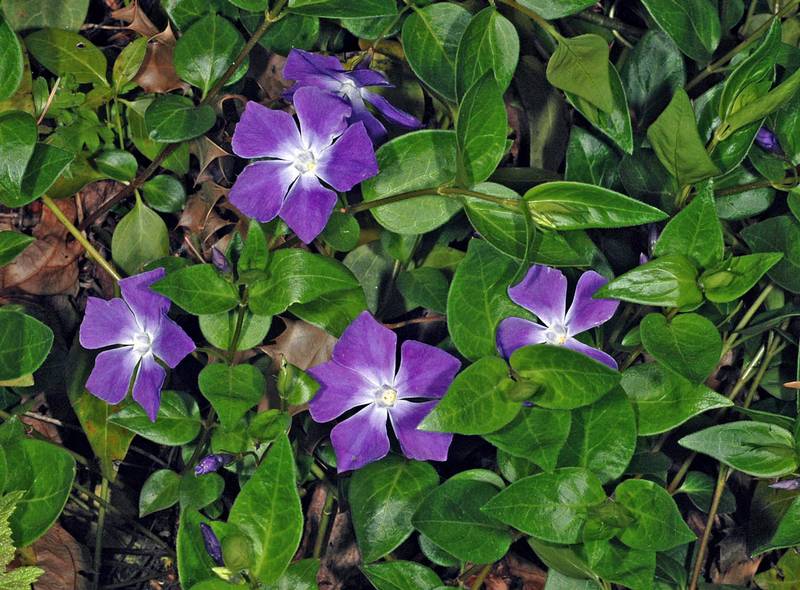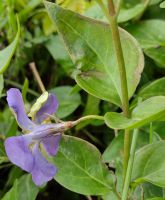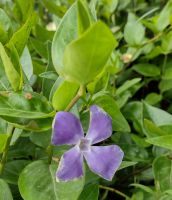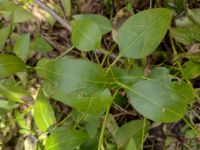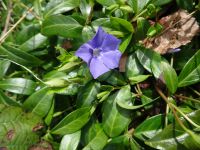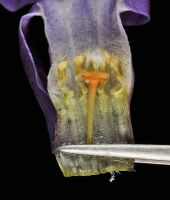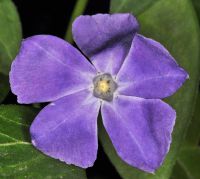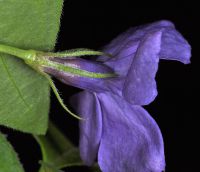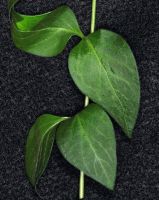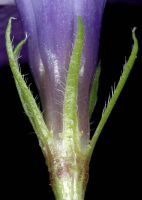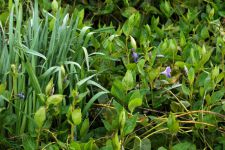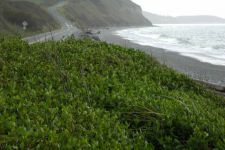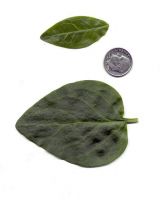Distribution: Occurring west of the Cascades crest and east in the Columbia River Gorge in Washington; British Columbia to California, east to Idaho, Utah, and Arizona,
Habitat: Disturbed forest understory and edge, roadsides, wastelots, and other disturbed areas at low elevations.
Flowers: June-August
Origin: Introduced from Europe
Growth Duration: Perennial
Conservation Status: Not of concern
Pollination: Bumblebees, bees, flies
Glabrous, perennial herbs with milky juice, the branches 1-3 dm. long, often trailing and rooting.
Leaves opposite, long-petiolate, ovate to ovate-lanceolate, 3-9 cm. long, with fine hairs along the margins.
Flowers solitary in the leaf axils, on long pedicels; calyx divided nearly to the base, the 5 lobes linear, with short bristles on the margins; corolla blue, with long, narrow tube and 5 widely-spreading, truncate lobes, 3-5 cm. broad; tube about 2 cm. long, crested and hairy in the throat; stamens 5, attached below the throat, the filaments short; style elongate, the stigma ovoid, tapering to a truncate apex; ovary superior.
Follicles 3-5 cm. long.
Publication: Sp. Pl. 1: 209. 1753.
PNW Herbaria: Specimen records of Vinca major in the Consortium of Pacific Northwest Herbaria database.
WA Flora Checklist: Vinca major checklist entry.
OregonFlora: Vinca major information.
E-Flora BC: Vinca major atlas page.
CalPhotos: Vinca major photos.
USDA Plants: Vinca major information.


